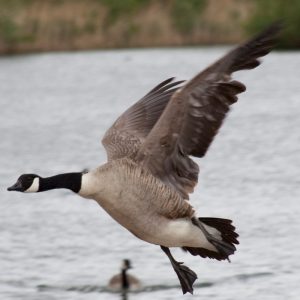
Amazingly, science has discovered much about the unique structure and abilities of many of our birds. From intelligence factors that aid some birds in working outside the expected box of survival, the ability to participate in mathematics and physics to achieve certain ends, reasoning behind flying in certain patterns, and a myriad of other incredible findings that are consistently being discovered, we are constantly being surprised. The newest discovery is that birds are built to not only detect the magnetic fields, but to also see them.
Science has long wondered how birds navigate. Essential to their successful navigation is their ability to make sense of their internal compass. Earlier this year, it was revealed that researchers from several universities (Lund University in Sweden studied zebra finches; the University of Oldenburg, Germany, studied the European Robin) found the existence of a core protein in the eyes of birds that continues to be functional in variable lighting conditions. In the past, a professor from the University of Illinois during the ‘60s determined (without proof) that birds could respond to the magnetic field via their eyes due to a certain undetermined molecule within the eyes. It is from that assumption that further studies were undertaken.
Birds “See” Their Routes
The process used for these recent discoveries was a complicated one that essentially required an injection of a dye into parts of the eyes and the part of the brain that involves orientation. It was found that the two injected dyes traveled pathways that met in the area of the brain that involves vision. This gave credence to the thought that birds could “see” their travel using the visual aspects of the magnetic field of the Earth.
Lund University published their findings in the Journal of The Royal Society Interface(here). They stated that the magnetic compass of the birds were light dependent and delivered orientation information to the flying bird about the alignment of the magnetic field. Not only did the birds use the visual sighting of the magnetic field for their migratory travels, but that they also used them for day to day spatial orientation.
The University of Oldenburg published their findings on the European Robin in Current Biology(here). As with the researchers of Lund University, their findings were identical in scope. Both share that the isolated protein is Cryptochrome 4, or Cry4, as it is used in scientific phrasing. The interest is that the protein is found only in vertebrates that utilize an internalized magnetic compass. Cry4 is sensitive to blue light, a light given off by the Earth’s magnetic field.
Just as interesting is the additional discovery that nocturnal insects move from place to place using the same internal magnetic detection as the birds. As we move through the span of time, the more we discover about our birds and other creatures, the easier it becomes to help them in any time of crisis. In time, we will have a complete blueprint for how animals live their lives on this shared planet we all call home.





